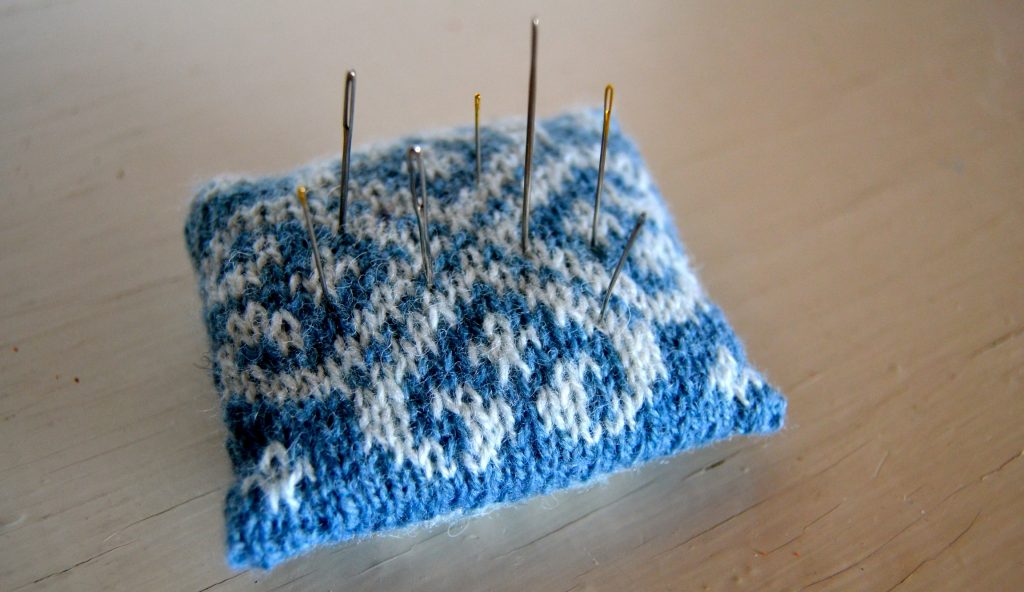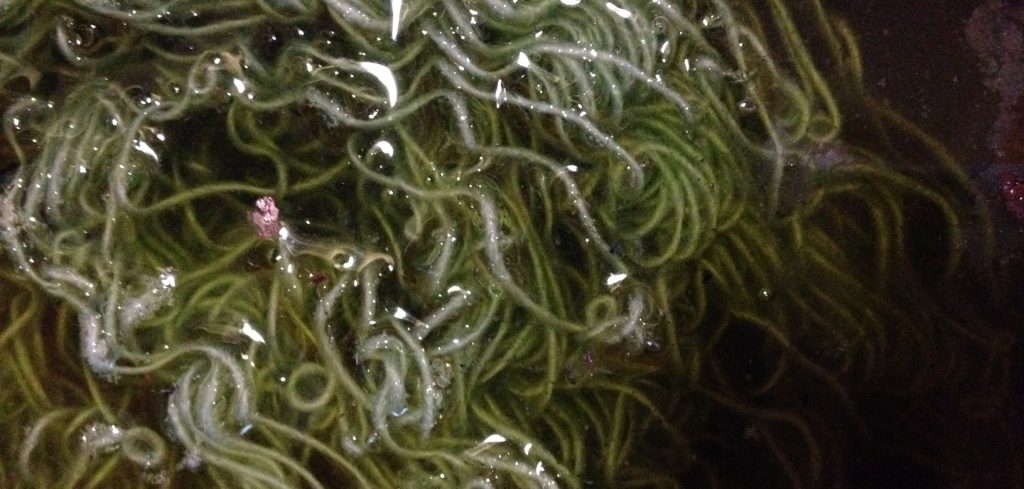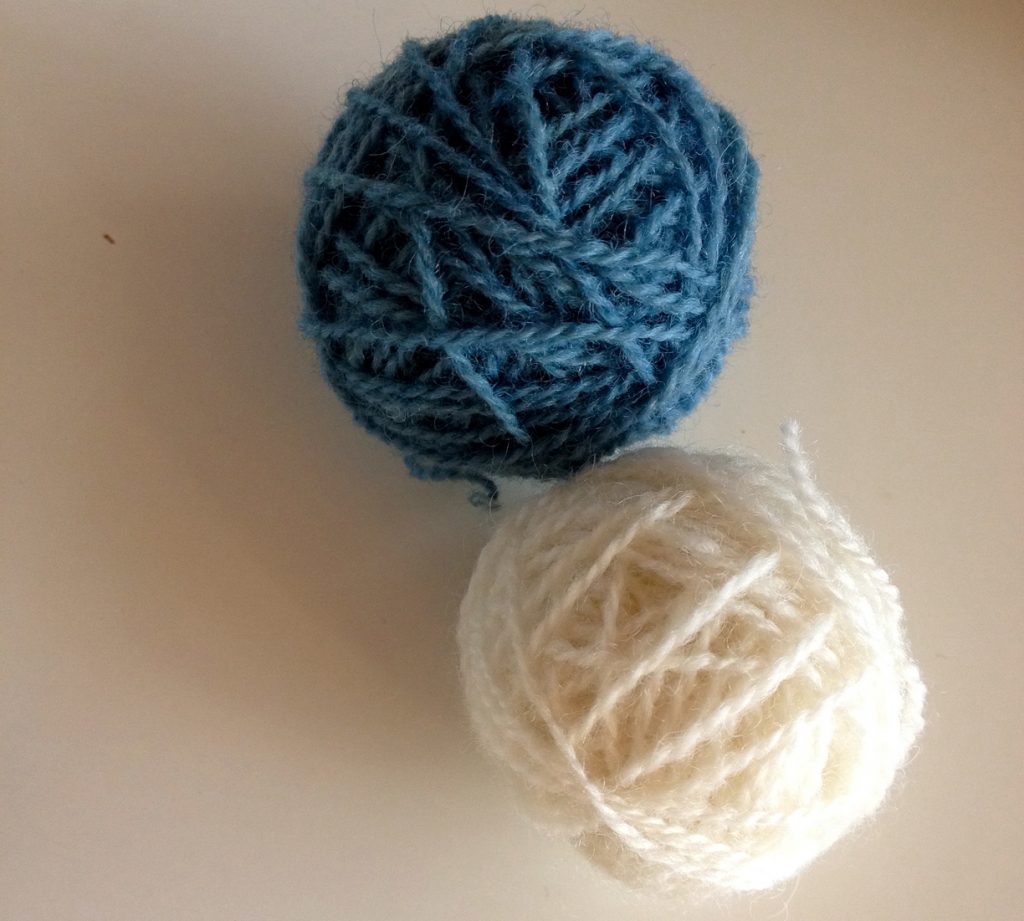
Quite a while ago, I knit this little pincushion, the physical evidence of my experiments with an organic indigo vat. It’s knit in Fenris 100% wool, 450 m/100 g.
The pattern is free, Peerie Pin Cushion by Ellen Kapusniak. You’re supposed to sew it together, but I, of course, grafted it closed.
I normally use a chemical vat with sodium dithionite as the reducing agent, which reliably works for me without crocking or anything of the sort. But it stinks, and I don’t like mixing the chemicals in the same house as my children.
Another problem I’ve experienced with this relatively harsh reducing agent is that the color doesn’t deepen with successive dips. This is a known problem with this type of vat. It is just as efficient at depositing indigo on your fiber as it is at stripping it back off.
And then, I was also inspired by my visit to the natural dyer Kenichi Utsuki at Aizenkobo to try the real thing myself. He holds nothing but contempt for indigo dyeing that, although it uses natural indigo, uses an artificial, chemical vat for the dyeing process. According to him, the complexity of the final result depends on the slow build-up of layer after layer of color – as does the light-fastness.
I tried using a fructose vat, using the ratio found in Maiwa’s instructions (there’s also instructions for the same type of vat here). Here, one uses the fructose as a reducing agent, since fructose is a reducing sugar. It’s not nearly as potent as the dithionite.
The instructions say 1 part indigo, 2 parts lime, 3 parts fructose. Or at least I thought I used their instructions – they say 20 g of indigo, but I decided that I would try with 5 g. That gave very little blue on my yarn, but lots of blue was left at the bottom of the vat. You can almost see how weak the color is here:

I was later advised by the knowledgeable dyers of Ravelry that the fructose vat doesn’t scale. You have to use at least 20 g of indigo, and that should give you a living vat that you can feed more fructose and base and keep using for months.
I tried scaling it up, but the results I got were not what I had imagined. Sure, I dyed yarn blue, but the amount of color I got out of the vat still just didn’t correlate with how much indigo I put in. There was still a lot of blue sludge at the bottom of my vat.
I would love to run this vat much longer and get a continuous process going, in order to transform more of the indigo at the bottom. The vat has to become a living thing, and you have to dip and redip and so on!
I want to try this type of vat again because it is much more people and eco-friendly, and it is much closer to traditional methods of indigo dyeing than the chemical vat is.

[…] while back, I experimented a bit with an indigo vat with fructose, but my results were not very convincing, in the sense that the amount of blue I got out of the vat […]